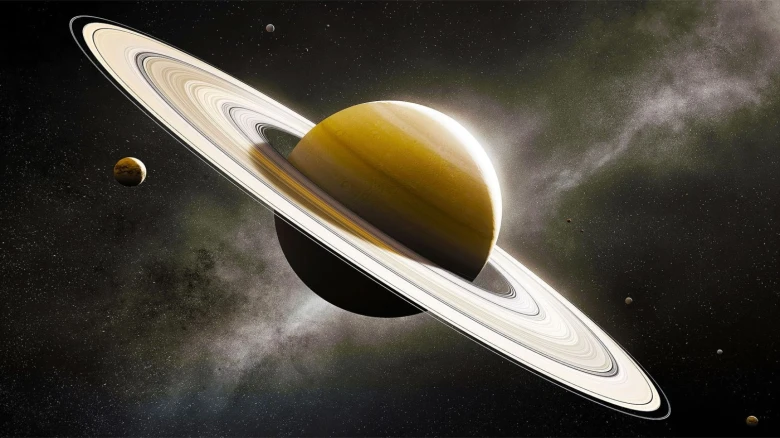These moons orbit near the edges of the rings and help to keep the ring particles in place through their gravitational influence...
Digital Desk: Saturn, the sixth planet from the Sun in our Solar System, is renowned for its magnificent ring system, a true spectacle of celestial wonder. These rings, composed of billions of icy particles and small rock fragments, have captivated astronomers and space enthusiasts for centuries with their immense scale and striking beauty. However, in 2025, Saturn's rings will seemingly disappear from view, causing much intrigue and speculation. Despite appearances, Saturn won't lose its rings; rather, they will become invisible to us on Earth due to a fascinating celestial phenomenon.
Why won't Saturn's rings be visible in 2025?
The temporary disappearance of Saturn's rings from our view is due to the planet's unique axial tilt and orbital mechanics. Saturn rotates on an axis tilted by 26.7 degrees, meaning our view of its rings changes as the earth moves along its orbit. This tilt causes Saturn's rings to align edge-on with Earth approximately every 13 to 15 years. When this alignment occurs, the rings reflect very little sunlight to Earth, making them almost invisible from our perspective.
To better understand this, imagine Saturn's rings as a thin sheet of paper viewed from a distance. When the paper is aligned edge-on, its surface becomes nearly invisible. Similarly, during this period of alignment, Saturn's rings will appear significantly fainter, though not completely disappearing from sight.
The next alignment will occur on March 23, 2025, when Saturn's rings will be precisely edge-on to our line of sight. This alignment will cause the rings to vanish from our view temporarily. Fortunately, this change is not permanent. As Saturn continues its orbit around the Sun, the rings will gradually reappear after March 2025, only to disappear again briefly in November 2025 due to Saturn's axial tilt. By 2032, the rings will return to full view.
Composition and Mystery of Saturn's Rings
The origin of Saturn's rings remains a topic of debate among astronomers. Some theories suggest that the rings are remnants of a moon or comet that was destroyed by Saturn's immense gravitational forces. Others believe the rings could be made up of material left over from the planet's formation over 4 billion years ago.
The rings themselves are composed primarily of ice particles, rocky debris, and cosmic dust. The size of these particles varies widely, ranging from tiny grains of sand to massive chunks as large as houses or school buses. Unlike a solid structure, Saturn's ring system is composed of several distinct sections, including the prominent A, B, and C rings, and the fainter D, E, F, and G rings. These sections are separated by gaps, such as the notable Cassini Division, which spans approximately 4,800 kilometers wide.
Gravitational interactions with Saturn's many moons, including the "shepherd moons," play a significant role in shaping and maintaining the rings. These moons orbit near the edges of the rings and help to keep the ring particles in place through their gravitational influence.
While Saturn's rings may seem to disappear in 2025, this event is a natural consequence of the planet's orbital and axial dynamics. The rings will eventually re-emerge, continuing to inspire awe and fascination for future generations of astronomers and space enthusiasts.

Leave A Comment